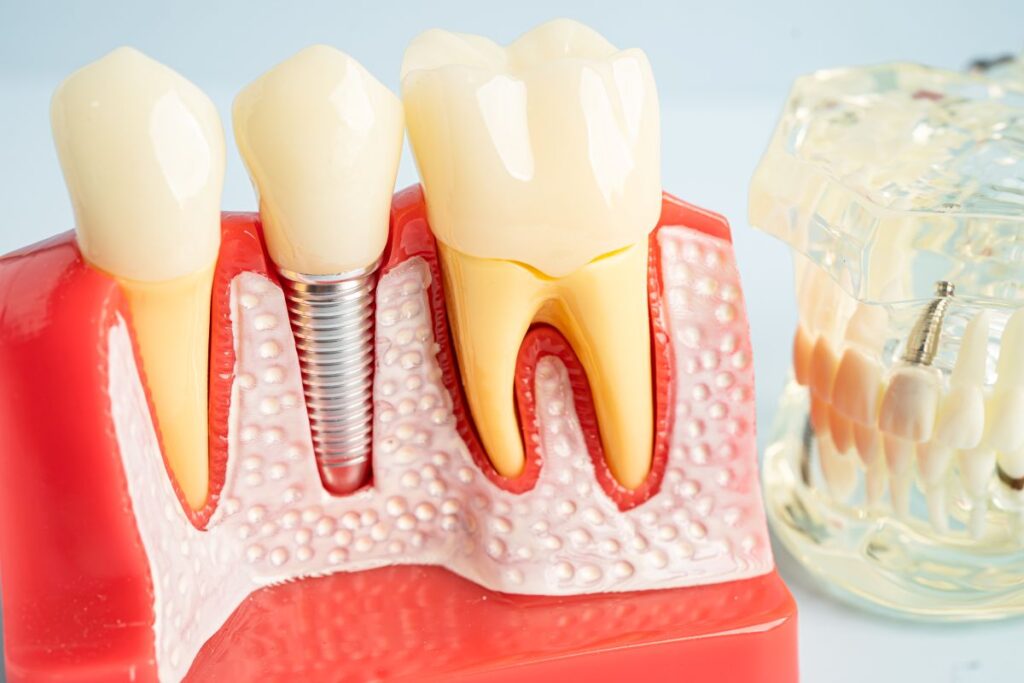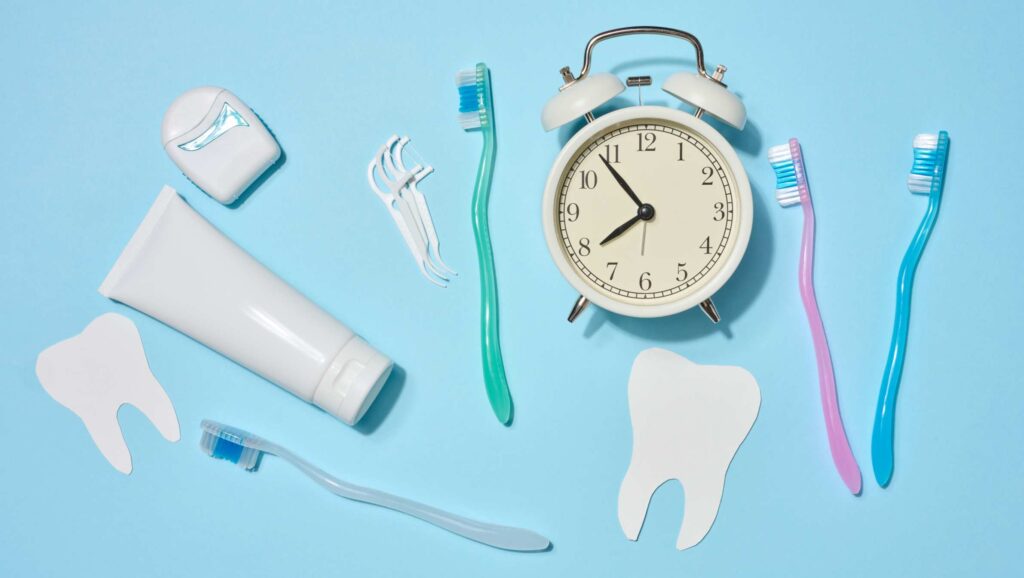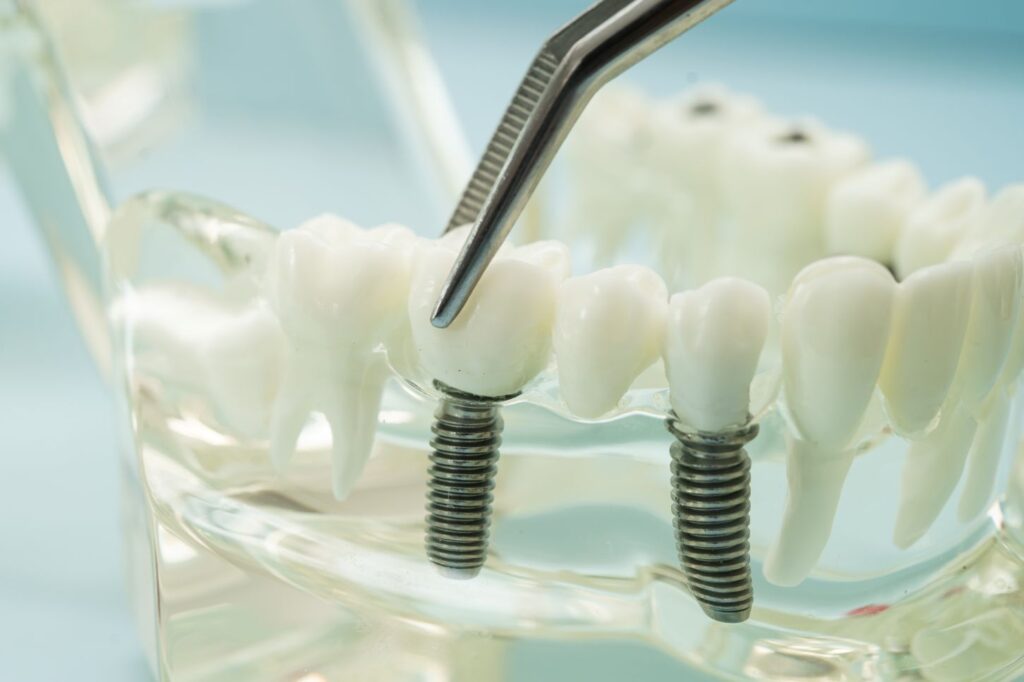Missing a tooth can change how you eat, speak, and smile. In Turkey, integrated clinics pair experienced surgeons with on-site digital labs making a dental implants in turkey faster to complete with fewer visits and clear timelines. Below, you’ll find exactly how the process works, who’s a good candidate, what affects cost, and how Mira Clinic supports you from planning to long-term maintenance.
Author: Mira Clinic Medical Team – Medically reviewed by: Dr. Yahya Mazel, DDS – Last reviewed: 2025-10-27
Why Does Turkey Lead in Dental Tourism?
Turkey’s advantage comes from an integrated workflow:
- Shared planning: Surgeons, prosthodontists, and digital labs align on one plan.
- Coordinated case management: A dedicated coordinator handles steps from assessment to remote follow-up.
- Clear timelines: Patients receive precise schedules with fewer complications.
This system suits international patients who value speed, clarity, and predictable outcomes.
What Distinguishes the Implant Experience in Turkey?
- Clinic–lab integration: Fast digital fabrication improves accuracy and reduces remakes.
- Clear treatment plans: Written, standard-based plans explain immediate loading vs. two-stage approaches according to bone quality.
- Integrated team: A surgeon, prosthodontist, and CAD/CAM technician collaborate at every step to keep communication tight.
- Modern digital tools: CBCT 3D imaging, intraoral scanners, and guided templates reduce errors and improve fit and comfort.
- Pre-arranged organization: You can share records before travel; after treatment, remote follow-up maintains continuity.
How to Choose the Right Clinic
- Ask for a written plan listing options, steps, risks, and costs.
- Review similar cases with before/after photos and a brief pathway explanation.
- Confirm implant systems by name and ask about maintenance and spare parts availability.
- Clarify follow-up once you return home so your care remains consistent.
Upload X-rays/records for a structured assessment before you travel.
What Are Dental Implants?

Dental implants replace missing teeth with a natural look and feel. Each implant includes three parts:
- Implant (root): A biocompatible post—usually titanium—placed in the jaw. It bonds with bone (osseointegration), creating a stable base and helping preserve bone density.
- Abutment: The connector that links the implant to the crown and sets the proper chewing angle.
- Crown: The visible tooth that restores chewing, speech, and confidence.
In short, the system mimics a natural tooth and often lasts longer than traditional options.
Endosteal vs. Subperiosteal Implants
- Endosteal: A titanium screw placed inside the jawbone to achieve stable osseointegration. This is the standard option due to high stability and success rates. It’s chosen when bone thickness and density are adequate—or after augmentation—and suits single, multiple, or full-arch solutions (All-on-4/All-on-6). Loading usually follows 8–12 weeks of healing; immediate loading is possible in selected cases.
- Subperiosteal: A custom titanium framework that sits on top of the bone under the periosteum, with posts emerging through the gums. Used in severe bone resorption when grafting is difficult or not preferred. It’s less common due to higher complication rates (e.g., gum infections, framework exposure) and is considered selectively after CBCT evaluation and a clear risk–benefit discussion.
Single Tooth, Multiple Teeth, or All-on-4/All-on-6 (Full Arch)
- Single tooth: One implant with an individual crown preserves adjacent teeth and closely matches natural appearance and function. Planning uses CBCT. The crown is typically loaded after 8–12 weeks; immediate loading is possible in select cases.
- Multiple teeth: Two implants may support a 3–4 unit bridge, reducing the number of implants while restoring chewing with balanced force distribution.
- Full arch (All-on-4/All-on-6): Four or six strategically placed implants—sometimes angled to avoid sinuses or nerves—support a fixed bridge for the entire arch. This can reduce grafting and time, and may allow same-day temporary restoration. Maintenance and meticulous cleaning around abutments are essential.
Dental Implants Cost in Turkey 2025
This section explains typical cost structures, what packages include, factors that affect pricing, and add-ons to watch for. (For a detailed price list, see: Dental Implant Costs in Turkey.)
Typical Ranges and What Packages Include
| Item | Typical range (USD) | Notes |
|---|---|---|
| Consultation | $0 | free |
| Panoramic X-ray | $20–$110 | Often included in packages. |
| CBCT 3D scan | $50–$120 | Usually billed if advanced planning needed. |
| Implant fixture (per implant) | $400–$800 | “Implant only,” abutment often included but confirm. |
| Zirconia crown (per tooth) | $180–$300 | Premium multilayer zirconia may be higher. |
| Single implant bundle (implant + abutment + zirconia crown) | $1,200–$2,500 | Most common quote patients ask about. |
| Temporary crown/bridge (per tooth or unit) | $100–$200 | May be included for immediate loading/full-arch packages. |
| Tooth extraction (simple→surgical/wisdom) | $50–$300 | Complexity drives price. |
| Bone graft (per site) | $200–$500 | Material/volume dependent. |
| Sinus lift | $360–$1000 | depending on case |
| IV sedation (per session) | $200–$1,000 | Local anesthesia is usually included; IV/general extra. |
| All-on-4 (per arch, with immediate temp where indicated) | $1,800–$3,000 | “Budget” offers exist ~$3,500–$5,500; check inclusions/brands. |
| All-on-6 (per arch) | ~$2,250–$4,000 | Often quoted €6,000–€10,000; varies by brand/lab work. |
| Transfers/hotel coordination | Often included | Part of many medical-tourism packages. |
You can read more about Dental Implants
What Factors Change the Price
- Number of implants & restoration scope (single vs. bridge vs. full arch)
- Bone condition (grafts/membranes, sinus lift)
- Implant brand and components (budget vs. premium, warranties)
- Final material (monolithic or layered zirconia, pressed ceramic, PFM)
- Protocol (immediate loading, digital planning, guided surgery)
- Anesthesia type (local included; IV/general extra)
- Surgeon’s experience, clinic reputation, location
- Travel, accommodation, and the number of visits required
Additional or Hidden Costs to Clarify
Confirm whether the following are included or billed separately: CBCT, surgical guides, grafts/membranes/fixation, sinus lift, extractions and periodontal care, temporary restorations, IV/general sedation, crown material upgrades, post-placement maintenance, and logistics (flights/hotel/transfers). Get the warranty duration and coverage in writing.
Your tailored price with inclusions, exclusions, and options.
Request pricing
By sending, you agree we may contact you on WhatsApp with pricing.
Got it! We'll WhatsApp you the pricing shortly.
Dental Implants in Turkey: Best Cities and Clinics
Choose based on how well a clinic matches your case, budget, and schedule—not only city or name. Prioritize centers with CBCT-based diagnosis, strict sterilization, CE/FDA-approved implants with written warranties, and transparent costs from day one. Istanbul, Antalya, and Izmir are front-runners; select based on case complexity, available expertise, and travel logistics.
Which Cities Are Best—And Why?
- Istanbul: Often best for complex cases, with diverse specialties, extensive experience, and fast digital labs.
- Antalya: Ideal for organized treatment with a vacation vibe and comprehensive packages—great for moderately complex cases.
- Izmir: A calm, cost-balanced option with access to academic-level quality and shorter waiting times.
How to Verify a Clinic’s Reliability
- Clinic license and medical tourism authorization
- Written treatment plan after CBCT, outlining alternatives, risks, and a timeline
- CE/FDA-approved implants with a written warranty and LOT/traceability certificate
- Class B autoclave sterilization protocols
- Documented similar cases, implant stability measurements (ISQ), verified torque values
- Transparent pricing (implant/abutment/crown/additional procedures)
- Structured post-treatment follow-up plan
Mira Clinic offers an initial evaluation, timeline, and detailed cost breakdown before any commitment—so you can decide calmly and confidently.
Contact UsStep by Step: Your Dental Implant Journey in Turkey
Your journey includes an initial assessment, travel scheduling, surgery day, the healing and osseointegration period, and a final visit for your definitive crown. Each stage is explained clearly—timing, costs, and alternatives—with in-clinic and remote follow-up to ensure implant stability and comfort.
Pre-Travel Virtual Consultation & Planning
Before you arrive, the team reviews your X-rays (panoramic/CBCT), photos, and medical history via video call or secure messaging. You receive a written plan covering the number of implants, any grafting or sinus lift, the timeline, and a detailed cost breakdown. Reception, transfers, and accommodation can be arranged, so you land to a ready plan with no surprises.
Surgery Day & Anesthesia Options
Local anesthesia is usually sufficient; oral or IV sedation can be added under specialist supervision. Surgery follows a CBCT-guided digital plan to minimize trauma and place implants precisely. When primary stability is adequate, an immediate temporary crown may be fitted. After surgery, you receive clear instructions on medications, soft-diet care, hygiene, and review schedules.
Healing, Osseointegration, and the Final Crown Visit for dental implants in turkey
Osseointegration typically takes 8–12 weeks (longer if grafting was performed). Stability is checked with clinical tests and metrics such as ISQ. Next comes a digital scan and CAD/CAM fabrication of the crown, with precise bite and shade adjustments. Your journey concludes with a maintenance plan, scheduled professional cleanings, and at-home care guidance—plus the option of remote follow-up once you return home.
What You Should Know as a Patient
Request a written plan based on CBCT that outlines alternatives, risks, timeline, and detailed costs. Verify that the clinic is licensed, follows Class B sterilization, and uses CE/FDA-approved implants and materials with a written warranty and maintenance conditions. Understand the number of visits, any additional procedures (grafting or sinus lift), and the follow-up process after treatment.
Chat on WhatsAppImplant Brands and Materials Used in Turkey
At Mira Clinic, we use internationally recognized implant systems and titanium or zirconia abutments depending on the case, with full product traceability (LOT label and care booklet). Every component is backed by solid research, available spare parts, and global technical support—so you remain confident if you ever need service, inside or outside Turkey.
Warranties: What Do They Actually Cover?
Ask whether the warranty covers the implant only or also the abutment and crown, how long it lasts, and how to use it if you’re abroad. Warranties typically remain valid only if you follow post-treatment instructions (oral hygiene, regular checkups) and may exclude factors such as smoking or unmanaged bruxism. Always get the warranty in writing, with detailed care instructions to keep it valid.
Language Support and Communication
Mira Clinic provides a case coordinator and multilingual translators. You receive your treatment plan, reports, and updates in your preferred language, along with direct WhatsApp/email contact. We also provide copies of your X-rays, photos, medication lists, care instructions, and schedule—so you can share them easily with your local dentist.
Follow-Up After Returning Home
Agree in advance on a remote follow-up schedule to review tissue healing and implant stability, plus regular checkpoints after crown placement. Have a clear emergency protocol and a fast communication line for any discomfort, fracture, or screw loosening. We recommend professional cleaning every six months and daily use of interdental brushes to maintain gum and implant health.
Travel Planning, Number of Visits, and Timing

Treatment usually requires two visits:
- First visit: Evaluation and surgery, followed by 8–12 weeks of osseointegration.
- Second visit: Final crown placement after integration.
Plan 3–5 days for your first trip to complete scans, surgery, and early follow-up, and 3–7 days for your second trip for fittings and final delivery. Allow one full rest day after surgery before traveling back.
Payment Methods, VAT, and Insurance
At Mira Clinic, we accept credit/debit cards, bank transfers, and cash—with full transparency and no hidden fees. You’ll receive a detailed invoice in Arabic or English. We’ll explain in advance what part of your home-country insurance might cover and provide necessary documents for any claim.
Benefits and Risks
Dental implants in Turkey blend advanced expertise with reasonable costs. The best decision balances benefits with real risks. At Mira Clinic, we explain the plan, alternatives, and potential complications before starting, then schedule two treatment trips with remote follow-up after you return—so the picture is clear and you can decide with confidence.
Top Advantages of Getting Dental Implants in Turkey
- Specialized expertise: Highly experienced teams; surgeons, prosthodontists, and digital labs work jointly.
- Modern digital technologies: CBCT, guided planning, and surgical templates increase accuracy and reduce chair time.
- Flexible scheduling: Shorter waiting times suit international patients.
- Easy logistics: Pickup, transfers, and accommodation run smoothly—especially in Istanbul, Antalya, and Izmir.
- Approved implant systems: Globally recognized brands with written warranties and accessible spare parts.
- Cost transparency (Mira Clinic): Clear timelines and upfront cost breakdowns reduce surprises.
Possible Complications—and How We Reduce Risks
Potential issues include failed osseointegration, peri-implant inflammation, nerve or sinus injury, or bite/aesthetic problems if planning is inadequate. We mitigate risks by:
- Accurate diagnosis: CBCT and bite analysis; choose immediate loading or two-stage appropriately.
- Reliable implant systems: CE/FDA-approved with LOT traceability for support and replacement parts.
- Strict sterilization: Class B protocols to lower infection risk.
- Mechanical control: Verify torque and ISQ, when indicated, to ensure stability.
- Clear home instructions: Medications, oral care, soft diet; smoking cessation advised.
- Organized follow-up: Sufficient post-surgery stay, plus scheduled in-clinic and remote reviews.
Recovery and Aftercare
Keep post-surgery steps simple and clear: medication timing, a concise Do’s & Don’ts list for the first days, and written instructions in your preferred language. You’ll have direct contact points for quick help if pain, bleeding, or swelling exceeds expectations.

Pain, Swelling, and Eating Timeline
- First 48–72 hours: Mild–moderate pain and swelling peak, then subside. Take prescribed painkillers, use intermittent cold compresses, and sleep with your head elevated.
- Days 1–3: Cold or soft foods; avoid chewing on the implant side, very hot drinks, and smoking.
- Days 3–7: Introduce warm, soft foods with minimal chewing. Most patients feel markedly better by day 7.
- After 2 weeks: Gradually expand your diet as comfortable; avoid direct pressure on the implant site until cleared by your dentist.
Oral Hygiene, Checkups, and Maintenance
- Begin gentle oral care the day after surgery—brush normally while avoiding stitches, and use the prescribed mouth rinse as directed.
- After suture removal (or as instructed), add interdental brushes and a water flosser around the implant.
- Once the final crown is placed, schedule professional cleaning every six months and routine checkups to monitor screw tightness and bite balance. If you grind your teeth, use a night guard.

Mira Clinic sets a personalized follow-up calendar (in-person and remote) and provides a compact maintenance card so your care instructions are always at hand.
Sample 7-Day Travel Plan (All-on-4 Case)
This 7-day plan outlines what to expect when scheduling dental implants in turkey using an All-on-4 approach.
Day 1: Arrival + Comprehensive Evaluation
Airport reception and transfer. Full clinical exam, CBCT, digital scanning, medical history review, and any required lab tests. You’ll receive a written treatment plan with steps, cost, and timeline. The shade for your temporary teeth is selected, and informed consents are signed.
Day 2: Surgery & Sedation Options
Follow fasting instructions. Local anesthesia is typical; oral or IV sedation is available if needed. The surgeon places four implants per jaw with multi-unit abutments. Immediate impressions or a digital scan are taken to fabricate a temporary fixed bridge within 24–48 hours, provided stability allows it. Medication protocol begins; use cold compresses and rest with head elevated.
Day 3: Temporary Bridge & Bite Adjustment
Your temporary bridge is tried and secured (same day or morning of Day 3). The team adjusts bite and speech for comfort and provides guidance on a soft diet and oral care.

Day 4: Early Healing Check
The surgeon reviews incision sites and swelling (often peaking at 48–72 hours). Pressure points are relieved, photos are taken, and the painkiller and mouthwash plan is revisited. Updated Do/Don’t instructions are provided for Days 4–6.
Day 5: Final Adjustments Before Travel
Minor finishing touches—edge smoothing, precise bite adjustments, screw torque verification—are completed. Access holes are sealed. You’ll receive your treatment package:
- Clinical report and before/after photos
- Written post-op instructions
- Implant data card (brand, size, REF/LOT)
Day 6: Pre-Departure Review
Final check of bridge stability and gum health. Advice on gradually resuming warm, soft foods. A remote follow-up schedule is set. This day also serves as a safety buffer for any last adjustments.
Day 7: Travel & Remote Follow-Up
Departure day. You’ll receive flight tips (hydrate, avoid strenuous activity) and emergency contact details. A video follow-up is scheduled within two weeks to monitor healing and comfort.
Important Notes
- If primary stability is insufficient for immediate loading, a removable temporary prosthesis is used during osseointegration (8–12 weeks) before the final restoration.
- After integration, schedule a second trip (3–5 days) to fabricate and deliver the definitive bridge—often a titanium framework with acrylic or multi-layer zirconia teeth—followed by final bite adjustment and semiannual maintenance.
FAQs
Costs vary by number of implants, restoration type, and additional procedures. Always request a written quote that includes implant + abutment + crown. In most cases, prices are lower than in Europe or the Gulf for equivalent systems and standards.
Yes—when you choose a licensed clinic that follows Class B sterilization, uses CE/FDA-approved implants, and provides a clear written treatment plan with costs and follow-up details
Yes, for selected cases with high primary stability. A temporary crown is placed immediately, with a final crown after full osseointegration.
Clinics use internationally approved systems (CE/FDA) with globally available components. Keep your implant data, including REF and LOT numbers, for future reference.
Usually not fully, but partial reimbursement may be possible with an official invoice and treatment report. Check with your insurer beforehand.
Activate your remote follow-up plan and share your case file and implant details with a local dentist. If your treatment is under warranty, contact the clinic to initiate coverage.
Is Turkey Right for You in 2025?
Dental implants in Turkey remain a strong option for patients seeking evidence-based care, transparent pricing, and faster scheduling. If you can manage two visits with an osseointegration period in between and if you’re committed to oral care and follow-up then you’re an ideal candidate. Compare at least two or three clinics and request a comprehensive breakdown of steps, costs, and warranty terms before booking.






